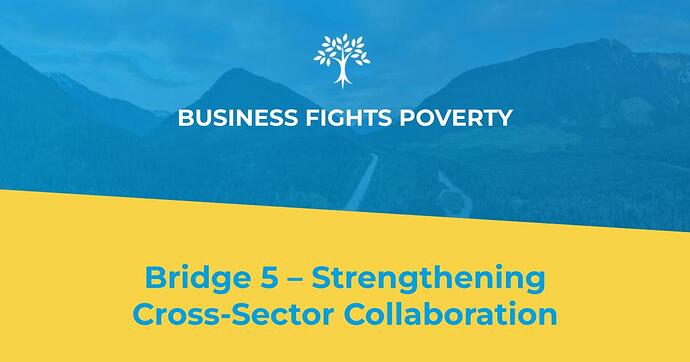Please share your favourite insights from this discussion on this LinkedIn post here
![]() Add your voice in the comments
Add your voice in the comments
![]() Reshare this post to help amplify this important discussion
Reshare this post to help amplify this important discussion
Let’s build bridges, together.
Background
The world is at a critical turning point. With the 2030 deadline for the Global Goals fast approaching, there is a growing urgency to surface bold ideas, practical examples, and collective action that can accelerate progress. As part of our journey towards the Global Goals Summit in September, we are launching a series of community sessions. The community session will take place in the morning and afternoon on the 21st of May and on the 16th of July, followed by a final reflective session during the Global Goals Summit.
Tackling complex global challenges requires businesses to collaborate across industries, with policymakers, and with civil society. This bridge enables companies to maximise their impact on the issues most material to their operations while leveraging the expertise, resources, and networks of others, ensuring collective action drives systemic change beyond what any one organisation can achieve alone.
The sessions were online, but also hybrid in selected locations thanks to the following Business Fights Poverty Impact Partners hosting their stakeholders to join the discussion:
Amref in Nairobi
Child Fund in Bengaluru
Cotton Connect in New Delhi
iDE Global in Dhaka
The session combined written contributions, real-time discussion, and community-led insights.
Read more on Five Bridges themes from the Business Fights Poverty framework.
Panel
VIEW Full List of Named Contributors
Questions
- What’s a powerful example of cross-sector collaboration you’ve been part of or witnessed—and what made it work?
- What do you think holds companies back from deeper, more meaningful collaboration with other businesses, foundations, civil society or government?
- How can partnerships move beyond short-term projects to create long-term systemic change?
How to add your comments
If you are already a member of the Business Fights Poverty online community, login here and then return to this page and click “Log In” at the top right of this page - if you are logged in correctly, you will not need to enter your details again. If you have not logged into our new community platform, you will have to reset your password here.
If you are not already a member of the Business Fights Poverty online community, you will need to sign up here . Once you have joined the community, you can return to this discussion page and click “Log In” at the top right of the page.
